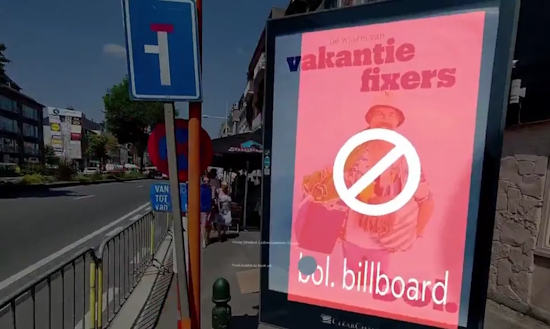[Most people dislike advertisements (e.g., see results from a 2023 UK survey) and many of us try to avoid encountering them, especially as they’ve become more common and arguably intrusive and thus more likely to ‘break’ presence during our media experiences. Although there are still limited options for linear TV, streaming, games and virtual reality, we can use widely available free ad blocker software for the web, or we can pay to avoid ads. But as Interesting Engineering notes, “You can pay for YouTube Premium to avoid watching ads during your sacred food-with-YouTube ritual, or pay for Spotify to not pester you with ads while you try to get a morning workout in, but what can you do about real-life advertisements?” The story below from Tom’s Hardware reports on a potentially effective way to use augmented reality (at least via Snap Spectacles) to block ads we encounter in the real (not mediated by technology) world. The idea itself isn’t new (see a 2015 Wired story about an early attempt), and the engineer’s new tool is still experimental, but it raises the prospect of not only replacing ads with something only slightly less intrusive and annoying, but hiding them and maintaining or enhancing presence. Coverage in Windows Central notes:
“While the app’s access is fairly limited since it is still in an early development phase, it could, in theory, find its way to Apple’s Vision Pro and Meta’s Quest. In the viral clip on X (formerly Twitter) post, users have suggested that the developer should replace the bold red rectangle with more natural elements like local foliage, plants, and animals. Imagine that.”
Of course, as with so many technology developments, if the logic of ad blocking in the real world is carried to extremes, it could create “Black Mirror” dangers. The author of coverage in Lifehacker writes this:
“People probably wouldn’t stop at replacing ads with pixel art. They’d be editing out anything that personally annoys them: homeless people, construction sites, other humans who have traits they don’t like. Curating your own visual experience in the real world could lead to the creation of personal echo chambers that make the world look more to your liking, but less like it is, the ultimate echo chamber.”
–Matthew]

[Image: Credit: Stijn Spanhove]
Engineer creates ad-block for the real world with augmented reality glasses — no more products or branding in your everyday life
Recreate ‘They Live’ with Snapchat’s AR goggles.
By Sunny Grimm
June 22, 2025
Say what you will about going outside, but there isn’t an AdBlock program for real-life billboards and ads. At least, there didn’t use to be. A software engineer on X (formerly Twitter) has built an augmented reality app to identify and block out advertisements, billboards, and product branding in real life.
Stijn Spanhove, a Belgian programmer, has engineered an advertisement-blocking app for use with Snap’s fifth-generation AR Spectacles. Google’s Gemini AI identifies advertisements and brands visible through the smart glasses, and promptly blocks them, replacing the advertisement with a red square, naming and shaming the blocked brand.
The video [in the original story or on X] shows the glasses in action, with the app correctly identifying and visually blocking out ads on posters, pedestrian billboards, and a newspaper. The captured video also shows the glasses blocking out the brand names on food packaging.
Spanhove says the project is still very early in its production, but “it’s exciting to imagine a future where you control the physical content you see.” Spanhove continues to brainstorm the future of the app in his replies, hinting at future features allowing users to replace the glaring red prohibited square with custom photos or lists from a notes app.
The app is built from libraries and APIs shared by Snap on its Github on its Depth Cache development, making the app, for now, a Snap Spectacles exclusive experience. Apple Vision Pro and Meta Quest enjoyers will need to wait a bit longer for similar experiences to arrive on their screens.
Snap, best known for its flagship social media app Snapchat, has been developing its AR Spectacles since 2016, though the camera goggles were originally designed to help people capture life events, rather than AR devices. While companies like Microsoft and Meta have abandoned or paused their augmented reality projects in recent months and years, Snap has seemingly been carrying the banner forward, with its fifth-gen Spectacles available for $99 per month for developers.
While mere mortals without development interest will need to wait a bit longer to experience a true They Live anti-propaganda glasses experience, the questions the app raises are perhaps the most interesting part of it. What will a world look like where we can control what, or perhaps who, we see? At least for now, it will look just like the normal world, just with a few extra red rectangles.
Leave a Reply